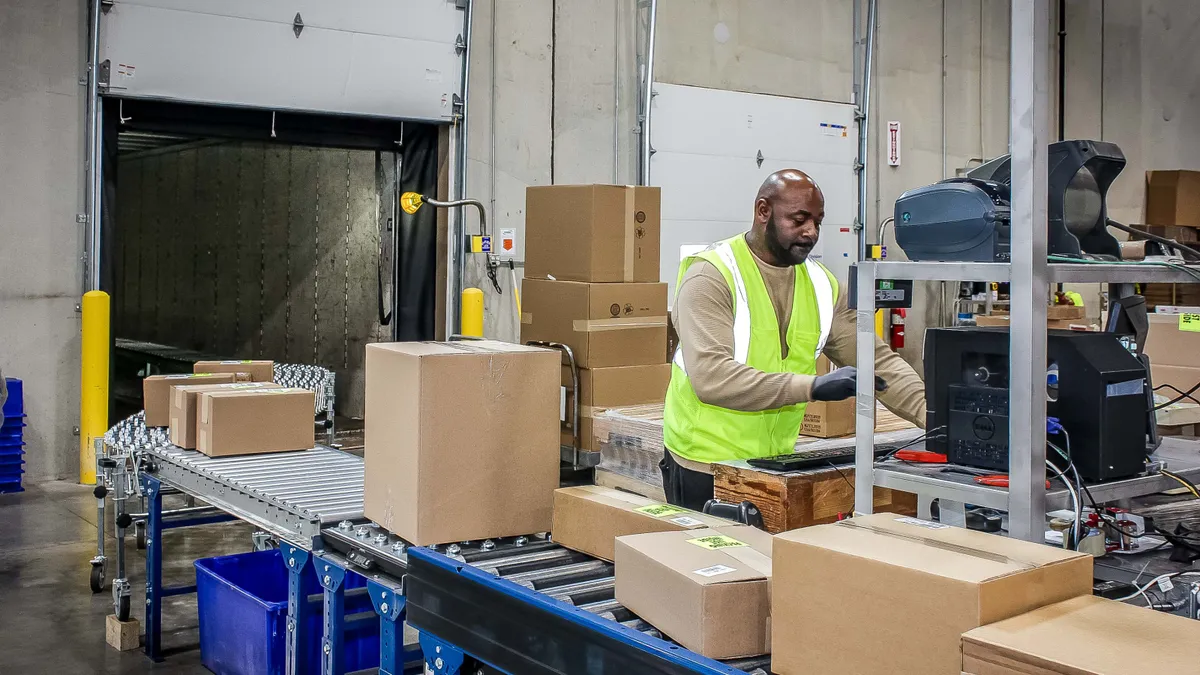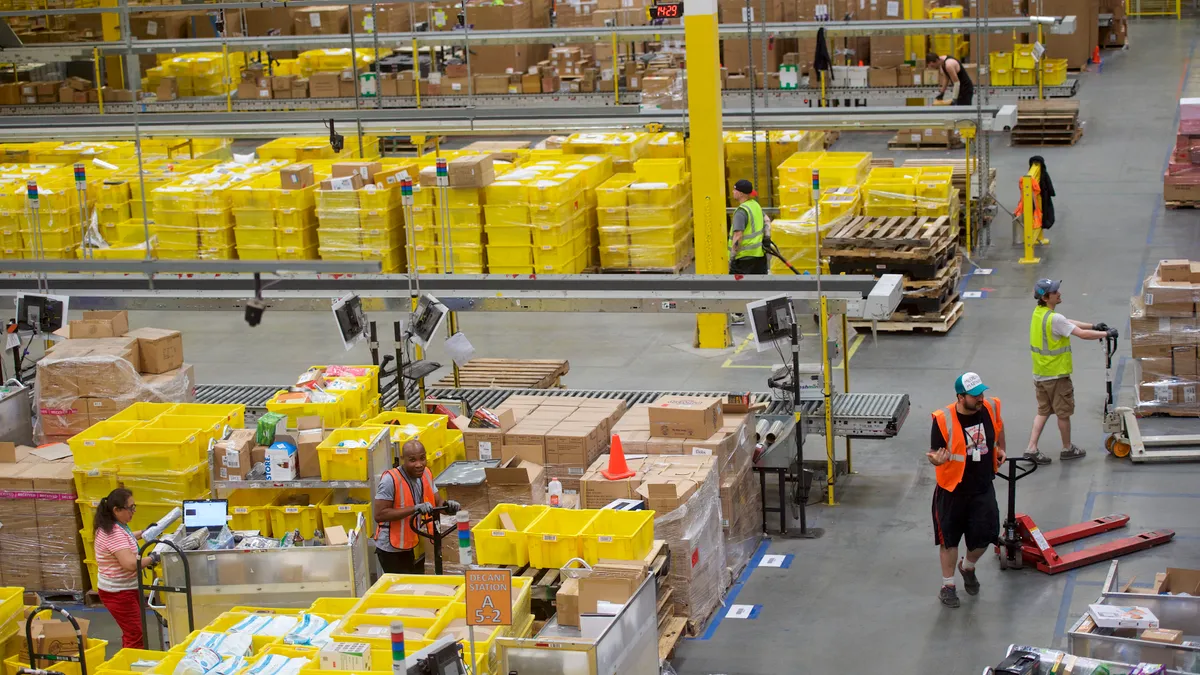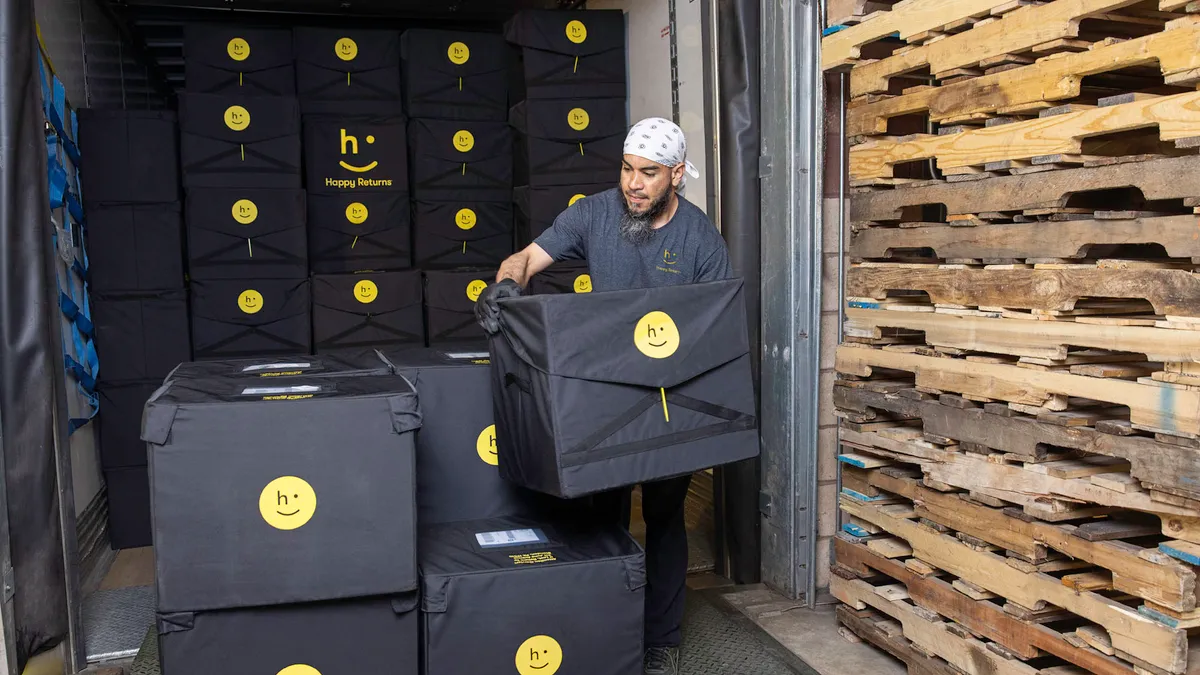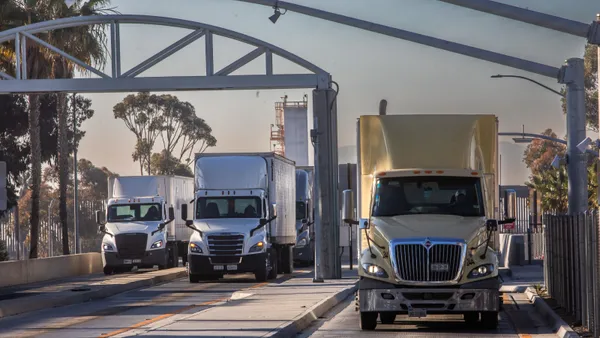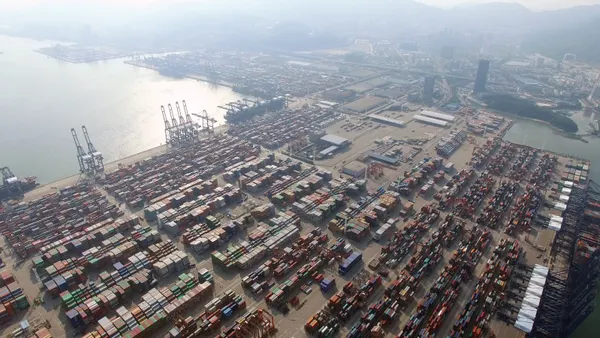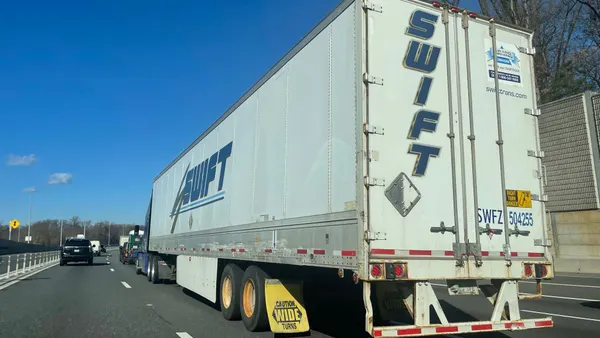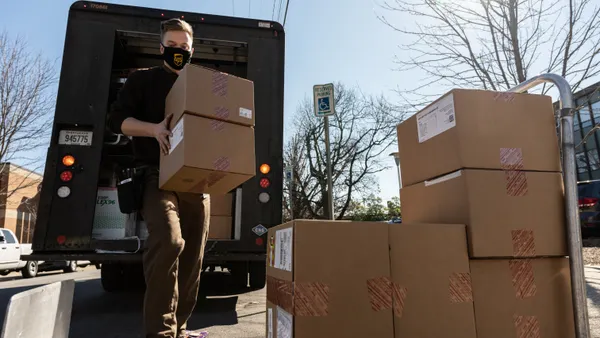Did you know that in 2023, e-commerce represented over 19% of total global retail sales? The rise in online ordering, particularly in retail, has also brought an increase in returns.
Customers who purchase online sacrifice the assurance that comes with purchasing in brick-and-mortar stores for the convenience of having that product delivered to their door. However, because they cannot touch the product before they buy it online – or try it on – returns are also on the rise. RetailWire estimates that returns for online purchases vary between 15 to 30 percent of total orders.
Traditionally, returns can cause headaches for fulfillment centers. Because fulfillment centers focus on doing what they do best – fulfilling orders – returns can become an afterthought. In areas with labor shortages, returns can affect labor costs within a facility and even affect service labor agreements because your staff, previously dedicated to fulfilling orders, now must handle this influx of returned products into your facility.
However, handling returns is not about just getting the product back into your facility. It is about getting it back into a forward pick location in an efficient way. In the meantime, what are you doing with the product? Is it going into reserve? Does it just sit in an area until the product needs replenishing? Often, there is no efficient way to handle returns, and the cost is not often passed along to the consumer, making operations less profitable.
Large and midsize fulfillment centers often turn to third-party logistics firms to handle returns on their behalf, a sometimes-costly decision. However, even companies who hired 3PL firms see those firms hire specialty firms to come in and handle returns. At what point does it make sense for you to save some costs and bring the operation in-house?
Here are three key factors when it comes down to evaluating whether to take on the challenge of reverse logistics:
Do you have the dedicated space?
Your traditional receiving area is likely set up to accept full pallet shipments of your products. However, by nature, these returns will be smaller because they are single item-versions of the pallet’s products. The size of the space you need will depend mainly on the size of the product, the volume of the product sold, the size of your facility and the return rate of products stored.
Can you allocate additional labor?
By handling returns in-house, fulfillment centers need to recognize that additional labor is required to accommodate putting the products back into available storage. That variable will likely be significantly affected by how well your processes are designed to get this material back into a pickable location after it is received back in your facility.
Do you have the appropriate software?
Some outdated or low-level warehouse management systems (WMS) may not have the functionality to accommodate returns, or at least they might not make it easy on your system. An integrated WMS with a scanning function that automatically puts the product back in the system must at least let your team know the returned product is back in the system, if not where it is within your facility.
Several other variables could affect this decision that will depend on your industry, facility and order frequency. Ultimately, you will need to formulate a well-defined strategy behind this decision. The goal should be to have a closed-loop supply chain with little to low waste.
If you need assistance evaluating your operations to determine whether handling your reverse logistics is a viable solution, we’re here to help. We can evaluate your processes, people and products and help you determine the equipment and workflows you would require to take on the reverse logistics challenge.
We can connect you with the appropriate equipment – from conveyor and sortation systems to pack stations or automatic bagging systems – and set your team up for success in this endeavor. Give us a call today!

